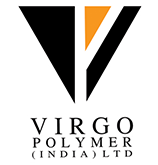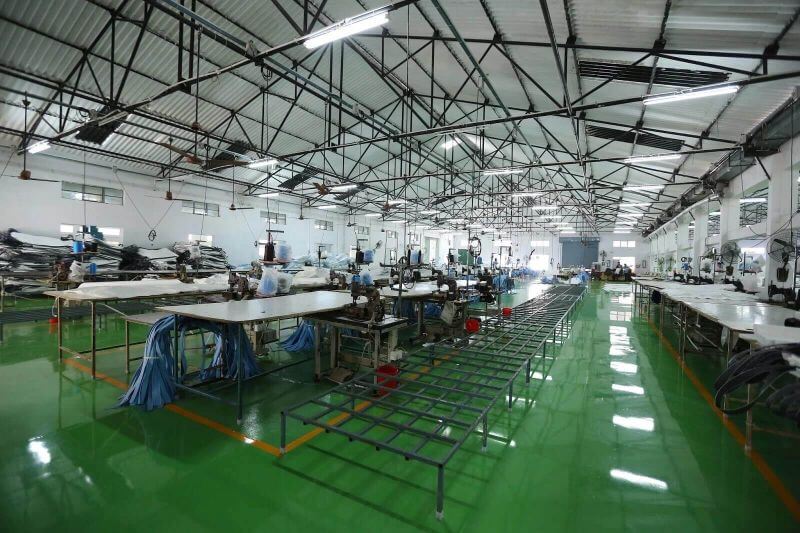



In recent years, there has been a remarkable shift in the global consciousness toward sustainability and environmental stewardship. As the world grapples with the pressing challenges posed by climate change, industries in every sector are actively seeking innovative ways to minimize their ecological footprint and mitigate the adverse effects of their operations. The FIBC industry, like many others, acknowledges the growing demand for efficient and safe bulk packaging solutions that not only ensure the protection of goods but also demonstrate a commitment to minimizing environmental harm. As the demand for such containers continues to surge, stakeholders within the industry are confronted with the challenge of striking a delicate balance between safety considerations and environmental responsibility.
In this blog, we will delve into the realm of sustainability in FIBC design, exploring the key factors and considerations that enable manufacturers to create eco-friendly solutions without compromising safety standards.
Environmental Impact
Conventional FIBC designs pose significant environmental challenges. They often rely on non-renewable materials, such as virgin plastics derived from fossil fuels. The extraction and production of these materials contribute to carbon emissions and deplete natural resources. Additionally, the energy-intensive manufacturing processes involved in FIBC production further exacerbate the environmental impact. Moreover, when FIBCs reach the end of their life cycle, improper disposal can lead to waste generation and pollution.
Industry Responsiveness
The FIBC industry has recognized the need for sustainable solutions due to growing demand from consumers and businesses seeking eco-friendly packaging alternatives. As environmental awareness increases, customers are actively seeking suppliers who demonstrate a commitment to sustainability. In response, FIBC manufacturers are investing in research and development, exploring innovative materials, and adopting sustainable practices to align with market expectations.
Safety and Compliance
While sustainability is a crucial aspect of FIBC design, it should never compromise safety considerations and compliance with industry regulations. FIBCs are used to transport a wide range of materials, including hazardous substances. Ensuring the containment, protection, and safe handling of these materials is of paramount importance. Sustainable design practices must take into account the necessary safety features, such as proper load stability, resistance to punctures, and compliance with relevant regulations governing FIBC safety.
Biodegradable and Compostable Materials
To reduce the environmental impact, FIBC manufacturers are exploring the use of biodegradable polymers, natural fibres, and compostable materials as viable alternatives to traditional FIBC fabrics. Biodegradable polymers break down naturally over time, reducing their persistence in the environment. Natural fibres, such as jute or hemp, offer renewable and biodegradable options. Compostable materials, when appropriately managed, can be composted and returned to the soil as organic matter.
Recycled and Recyclable Materials
Incorporating recycled content into FIBC production helps reduce the demand for virgin materials and minimizes waste. By using recycled plastics, manufacturers can divert materials from landfills and contribute to the circular economy. Additionally, designing FIBCs with recyclable materials allows them to be collected, processed, and reintroduced into the manufacturing cycle, reducing the need for raw materials and minimizing environmental impact.
Life Cycle Assessment
Conducting a life cycle assessment is crucial in evaluating the environmental impact of different materials used in FIBC design. It involves assessing the entire life cycle of the product, from raw material extraction and manufacturing to use, disposal, and potential recycling. This assessment helps identify the most sustainable material choices by considering factors such as carbon emissions, energy consumption, water usage, and waste generation throughout the FIBC's life cycle.
Lightweight
Reducing the weight of FIBCs offers multiple sustainability benefits. Lightweight FIBCs require fewer raw materials, reducing material consumption and minimizing the carbon footprint associated with production. Additionally, lighter FIBCs contribute to reduced transportation costs and lower fuel consumption during transit, resulting in decreased carbon emissions.
Space Optimization
Innovative design features can maximize the capacity of FIBCs while minimizing the need for excessive packaging. Efficient space utilization not only reduces material waste but also optimizes storage and transportation, leading to improved logistics efficiency and reduced carbon emissions.
Extended Product Lifespan
Extending the usable life of FIBCs helps reduce overall resource consumption. Manufacturers can achieve this by improving the durability of FIBCs through robust construction, reinforcing critical areas prone to wear and tear, and utilizing high-quality materials. Repairability options, such as replaceable components or repair kits, can further extend the lifespan. Additionally, exploring repurposing options for retired FIBCs, such as transforming them into secondary containers or using them for non-packaging purposes, contributes to sustainability.
Manufacturing Processes
Adopting energy-efficient production techniques is crucial for sustainable FIBC design. This can include using eco-friendly weaving methods that reduce energy consumption, optimizing production equipment for energy efficiency, and implementing measures to minimize waste generation during the manufacturing process. Additionally, recycling process water and incorporating renewable energy sources, such as solar or wind power, can further reduce the environmental impact.
Supply Chain Optimization
Optimizing the FIBC supply chain plays a vital role in sustainability. This involves reducing transportation distances, implementing efficient logistics practices, and utilizing alternative transportation modes, such as rail or sea, to minimize carbon emissions. Consolidating shipments, optimizing routes, and employing returnable packaging systems can also contribute to resource conservation and waste reduction.
Certifications
Prominent environmental certifications relevant to FIBC manufacturing include ISO 14001, which sets standards for environmental management systems, and various eco-labels that validate sustainable practices. Additionally, third-party certifications specific to FIBCs, such as those focused on recyclability or biodegradability, provide assurance to customers regarding the sustainability credentials of the products.
Industry Regulations
Compliance with relevant regulations and standards governing FIBC production is essential for ensuring sustainability. These regulations may include guidelines on material sourcing, waste management, emissions control, and worker safety. Adhering to these regulations not only helps protect the environment but also ensures the safety and well-being of workers involved in FIBC manufacturing processes.
Research and Development
Ongoing research and development efforts within the FIBC industry are instrumental in driving sustainable practices. Manufacturers are investing in exploring innovative materials, such as bio-based polymers or advanced recycling technologies, to enhance the sustainability of FIBCs. Research collaborations with academic institutions and industry associations help foster knowledge exchange and accelerate the development of sustainable solutions.
Collaborative Partnerships
Collaborations between FIBC manufacturers, industry associations, and sustainability-focused organizations are crucial for driving sustainable practices. These partnerships facilitate the sharing of best practices, knowledge, and resources, ultimately promoting the adoption of sustainable FIBC design across the industry. Examples include joint initiatives to develop recycling infrastructure, establish sustainability guidelines, or advocate for regulatory reforms that support sustainable packaging practices.
Sustainability in FIBC design is a crucial aspect that demands the attention of manufacturers, suppliers, and end-users. By implementing eco-friendly materials, optimizing designs, conserving resources, and adhering to environmental standards, the FIBC industry can successfully balance safety considerations with environmental responsibility. Embracing sustainable practices not only reduces the ecological footprint but also enhances the industry's reputation and meets the increasing demand for environmentally friendly solutions. By continuously exploring new avenues and collaborating across the value chain, the FIBC industry can drive positive change and contribute to a more sustainable future.
Thinking FIBC?
Think Virgo!
We are a leading FIBC manufacturing brand catering to customers globally. At Virgo Polymers, we recognize the pivotal role that FIBC bags play in industries where efficient handling, storage, and transportation of bulk materials are essential. Our sustainable FIBC bags not only safeguard your valuable cargo but also safeguard the environment.
Call us to know more @ +91 90030 48815 or email us at info@virgopolymer.com
